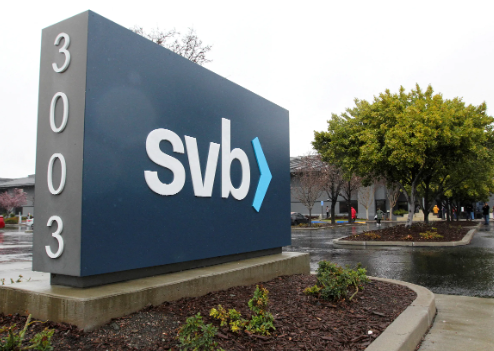The sudden collapse of Silicon Valley Bank (SVB) Financial Group, a key lender to technology firms, and the subsequent seizure of its assets by US authorities on Friday night has sparked considerable concern.
The US government reacted quickly to the emerging situation by promising Silicon Valley Bank depositors that they would have full access to their funds.
This unprecedented measure by federal regulators to safeguard billions of dollars in uninsured accounts comes amid fears that the bank’s demise may cause widespread panic.
Federal authorities announced on Sunday that they were taking “exceptional steps” in response to Silicon Valley Bank’s unexpected failure in order to prevent a domino effect on other small and regional banks.
Officials claim that the rescue plan would not cost taxpayers whatsoever since it will draw from a large pool of government insurance money provided by banks. Effective on Monday, all of Silicon Valley Bank’s clients’ funds are going to be accessible, according to the regulators.
Read also: A Global Slowdown Forces Microsoft And Meta To Begin Layoffs
U.S. actions follow wide spreading concerns
“Today, we are taking significant measures to defend the U.S. economy by increasing public trust in our financial system,” government authorities said in a statement released on Sunday. “The U.S. banking system will be able to continue safeguarding deposits and providing access to credit for consumers and companies, two crucial functions that contribute to a healthy economy,” it added.
A senior Treasury official, however, emphasized on the regulator’s action that the measures taken would not provide any provision for investors in Silicon Valley Bank.
“The bank’s bond and stock investors are being snuffed out. By purchasing these assets, they assumed a level of risk. They will take the losses,” the official said.
Prior to the announcement, depositors at Silicon Valley Bank were understandably nervous, given the federal government only insures deposits up to $250,000, and the vast majority of the bank’s savings were much beyond that threshold. The majority of the bank’s clients were technology startup companies and venture capital firms.
Over half of all venture-backed businesses in the United States perform business with SVB, and 44% of all US venture-backed technology and healthcare enterprises that started operations in the previous year are SVB clients. On December 31st, SVB’s asset value was $212 billion. Prominent businesses like Shopify, Pinterest, etc., are among the Bank’s clients.
Bank of England move on the SVB crisis
As Silicon Valley Bank’s parent business was failing, its UK branch filed for £1.8bn in liquidity on March 10, 2023, prompting the Bank of England to take action to declare the bank insolvent.
A statement released by the BoE on March 10 implies that it would seek court approval for SVB UK to enter insolvency and has no plans to use resolution mechanisms. In light of this, the UK government has made protecting the country’s thriving technology industry a top priority, as seen by the Chancellor’s statement delivered on March 12
It is possible that a remedy outside of the BA 2009 framework may be suggested after these urgent negotiations or that SVB UK would be placed into resolution instead of insolvency.
As per a report, some international Indian startups with significant exposure to the bank were able to effectively move their cash to other banks or neo-banks in the just-right moment after receiving recommendations from their investors. Yet, there were many who were unable to.
According to report by members of the startup ecosystem (including founders, investors, and advisors), the SVB crisis has had the greatest effect on early-stage Indian firms. With SVB’s reputation of being VC- and founder-friendly, the bank is a popular choice for startups that raise angel or seed rounds of $1 million to $5 million and want to deposit their funds.
An in-depth analysis of what occurred
SVB’s deposits grew to a record $189 billion during the 2021 financing boom and peaked at $198 billion. Subsequently, when interest rates were low, the bank made significant investments in newly issued bonds. For the year 2022, SVB reported $91.3 billion in securities on its balance sheet.
The value of bond holdings issued at lower rates fell after the US Federal Reserve began increasing interest rates in 2022. Moreover, when interest rates rose, VC companies gave fewer and smaller paychecks to startups, resulting in a financial winter.
As a result of a decline in startup deposits, financial institutions like SVB were forced to sell assets at a loss to make up for the shortfall in capital. The bond holdings were valued at $21 billion, and SVB reported on Wednesday that they had been sold for a loss of $1.8 billion. SVB, however, also announced that it was selling shares to the public in order to raise $2.25 billion.
Companies in the portfolios of major investors like Coatue Management, Y Combinator, and Peter Thiel’s Founders Fund are being urged to move their funds out of SVB owing to concerns about the bank’s solvency. At the same time, SVB has asked its clients not to spread panic by withdrawing their funds.
